Cystomatosis
Cystomatosis. Enjoy the videos and music you love upload original content and share it all with friends family and the world on YouTube. Relating to a type of glandular secretion in which the apical portion of the secreting cell is released along with the secretory products. His ears are not near as bad as linked article photos.
Ceruminous cystomatosis is a skin disease of the ear in cats. Nailbed epithelial inclusion cyst. The average age at diagnosis was 1086 years range.
In this report we describe a case of severe generalized apocrine cystomatosis in an Old English Sheepdog. Multiple steatocystoma or sebum cystomatosisIt is a rare entity made up of multiple cystic lesions of up to 5 cm. Ceruminous adenoma ceruminous cystomatosis apocrine cystadenomatosis.
None surgery or laser treatment. Feline Ceruminous Cystomatosis Ceruminous adenoma is a rare nonneoplastic skin disease of the feline ear. Apocrine cysts involving the eyelid margin have not been described in the veterinary literature.
Ceruminous cystomatosis CC also known as ceruminous gland hyperplasiaadenoma or apocrine cystoadenomatosis is a benign skin disorder of the feline ear of uncertain origin. Apocrine cystomatosis is a rare condition characterized by clusters of cystically dilated sweat glands or other specialized apocrine glands. The diagnosis was made through histopathology.
Published by Houghton Mifflin Company. Macroscopically cystomatosis is characterised by multiple dark blue or brown nodules usually less than 2 mm in diameter located in the external ear canal and vertical canal. It is thought to be a congenital present from birth or degenerative progressive often irreversible deterioration and senile weaknesses or diseases of old age change.
Relating to a type of glandular secretion in which the apical portion of the secreting cell is released along with the secretory products. Abstract Apocrine cystomatosis is an uncommon disorder in the dog characterized by multifocal cystic hyperplasia of apocrine glands over the head and neck.
Cystomatosis was found in six spayed females 24 one intact male 4 and 18 castrated males 72.
With a bluish haze. Nailbed epithelial inclusion cyst. Ceruminous cystomatosis is is a rare neoplastic skin disease of the feline ear of unknown etiology. Elderly and male cats are more at risk though this disease can affect cats of all ages and genders. The bad news their locations do not lend to being cut out and cauterized. Relating to a type of glandular secretion in which the apical portion of the secreting cell is released along with the secretory products. The most common neoplasm of the ear canal is ceruminal gland in origin. Cystomatosis was found in six spayed females 24 one intact male 4 and 18 castrated males 72. Ceruminous cystomatosis ie ceruminous adenoma apocrine cystadenomatosis is an uncommon nonneoplastic disorder of cats.
To date it is thought to represent a congenital or degenerative and senile change. In this report we describe a case of severe generalized apocrine cystomatosis in an Old English Sheepdog. Ceruminous adenoma may develop as a sequela to otitis externa a senile degenerative change or in some cases a congenital condition. Macroscopically cystomatosis is characterised by multiple dark blue or brown nodules usually less than 2 mm in diameter located in the external ear canal and vertical canal. The condition affects cats of all ages but cysts are more commonly encountered. It is thought to be a congenital present from birth or degenerative progressive often irreversible deterioration and senile weaknesses or diseases of old age change. Two cats progressed from.
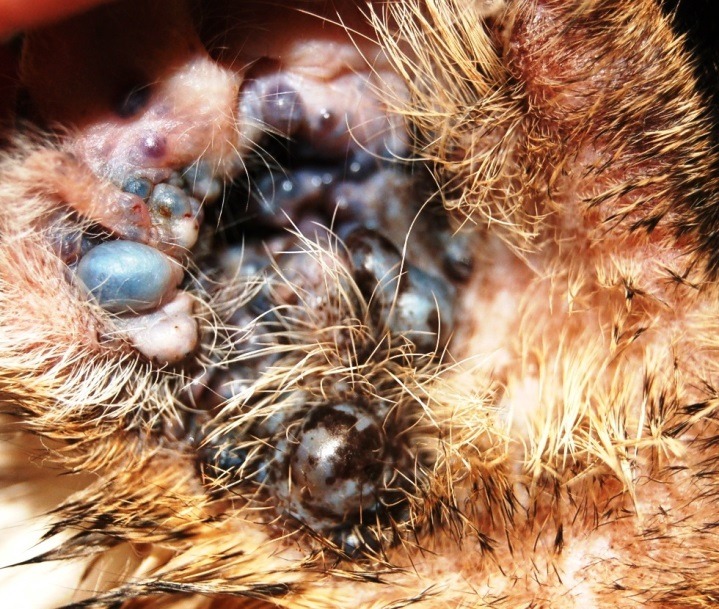





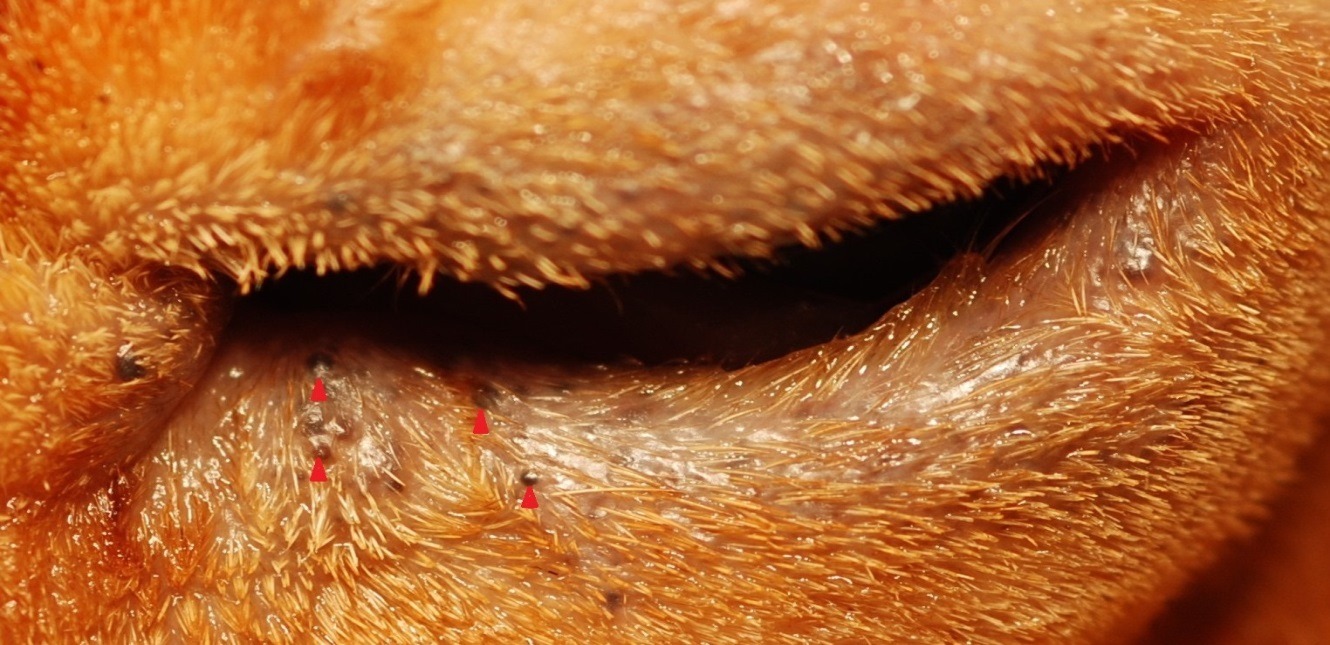
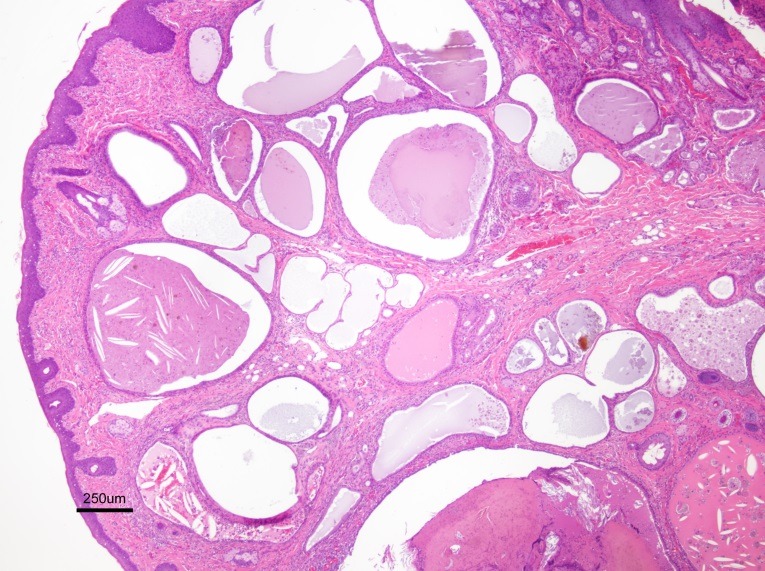














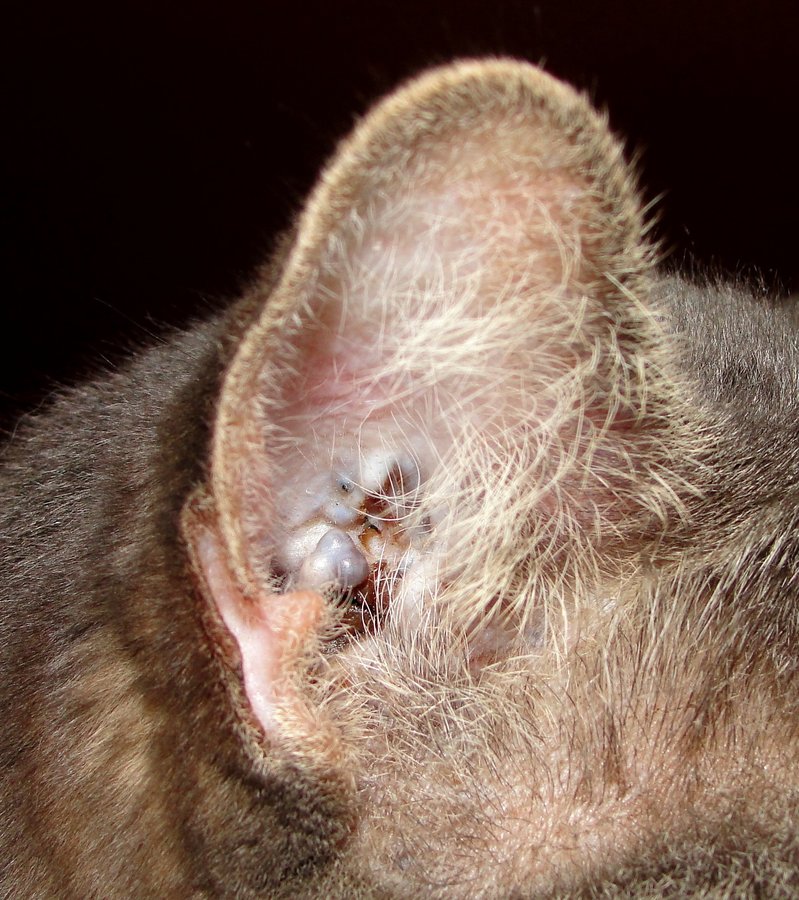



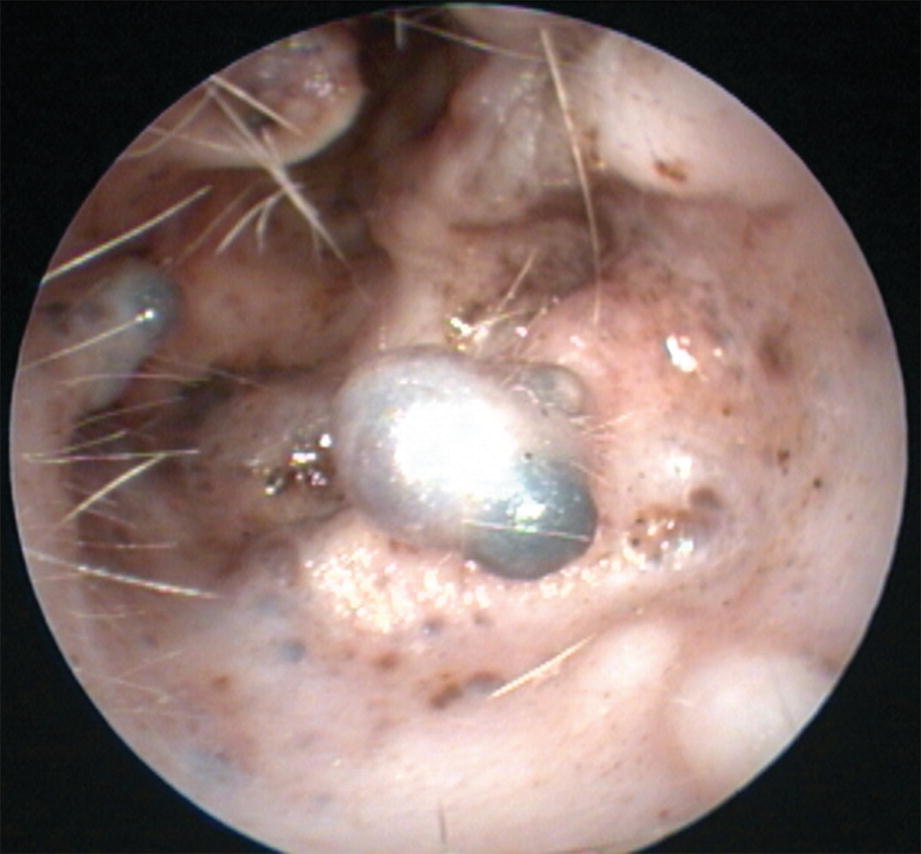

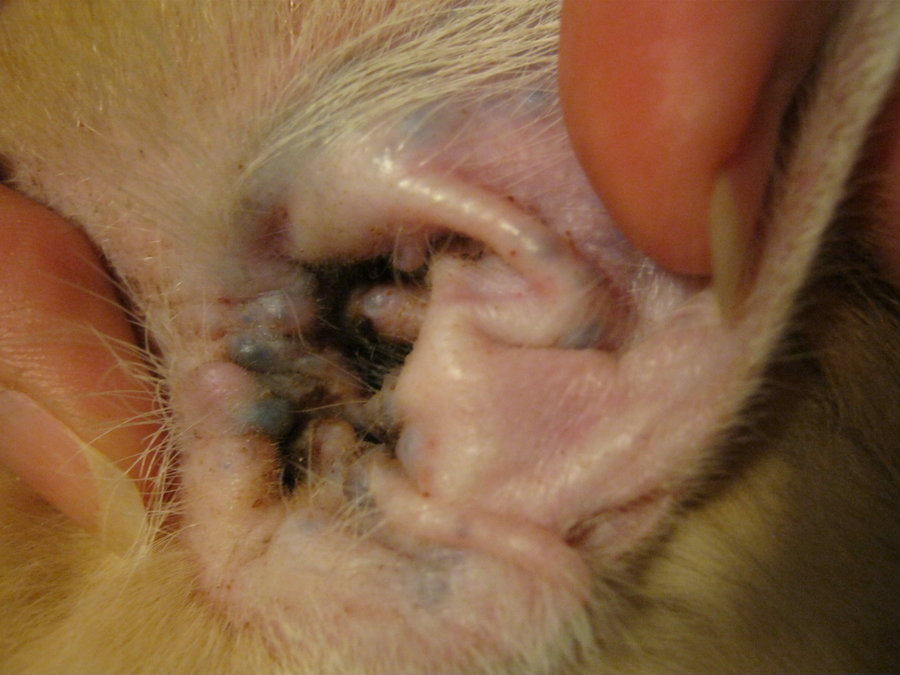

Post a Comment for "Cystomatosis"